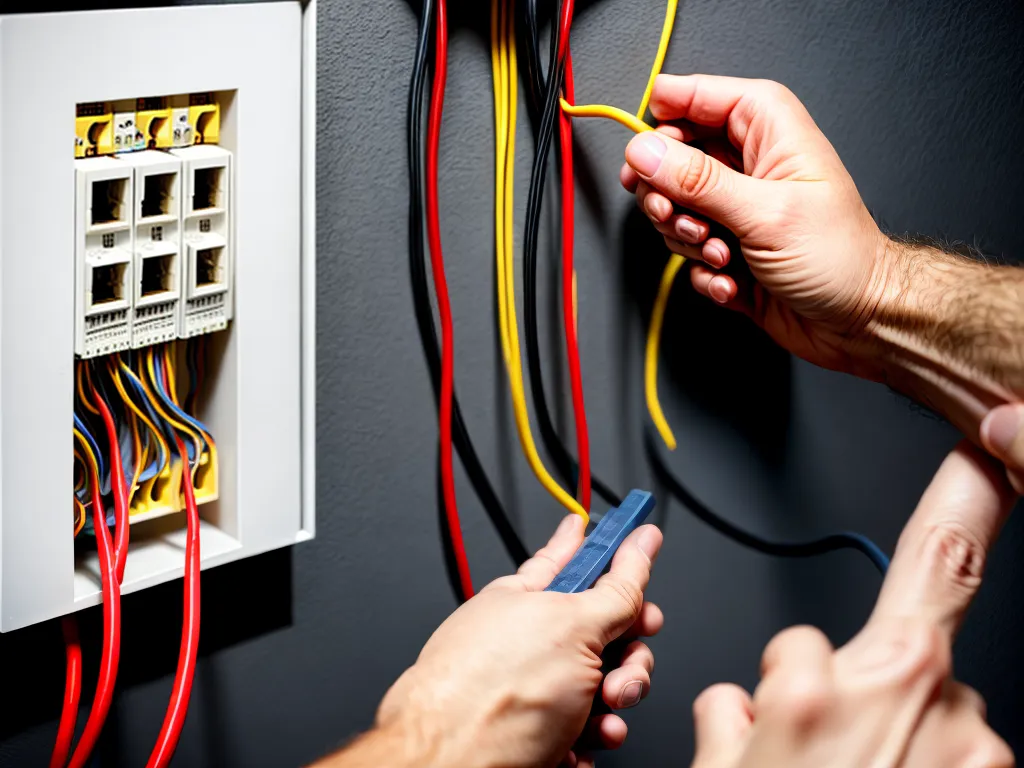
Electrical wiring in a home can seem complicated and mysterious to most homeowners. However, there are some simple tricks that can make working with home electrical systems much easier and safer. As a licensed electrician with over 15 years of experience, here are 7 little-known electrical wiring tricks that most homeowners don't know:
1. Use Wire Nuts Properly
Wire nuts are simple yet effective devices for connecting multiple wires together. However, many homeowners don't use them properly leading to loose connections and electrical hazards.
Here are some tips for using wire nuts correctly:
-
Choose the right size - Wire nuts come in different sizes meant for different gauges of wires. Using one that's too small can lead to a loose connection.
-
Twist wires together - Before putting on the wire nut, twist all the exposed wires tightly together with pliers. This secures the connection.
-
Wrap clockwise - When putting on the wire nut, twist it clockwise in a uniform motion to prevent loosening.
-
Tug test - After installing the wire nut, give each wire a firm tug to ensure a tight connection.
2. Use the Right Wire Strippers
Using the wrong wire strippers can damage wires or leave frayed strands that can cause shorts and fires.
Invest in quality strippers designed for the gauge of wire you're working with. The strippers should remove just the right amount of insulation without nicking the metal conductor inside. I prefer self-adjusting automatic strippers.
3. Identify Neutral vs Hot Wires
It's critical to distinguish neutral from hot wires as mixing them up can destroy appliances and be a serious hazard.
-
Neutral - Usually white or light gray. Returns current to the panel.
-
Hot - Any other color like black or red. Carries current from the panel to devices.
-
Ground - Bare copper wire. Safety to divert current in case of faults.
I recommend marking all neutral wires with white electrical tape for easy identification.
4. Use Decora-Style Switches and Outlets
The old-fashioned switches and outlets with screw terminals are inefficient to work with.
Decora-style devices feature push-in connections and a sleek modern design. They make wiring much faster and easier. Just strip the wire, insert it into the hole, and the device clamps down securely.
5. Fish Wires Using Fish Tape
Trying to route new wires through finished walls can be extremely frustrating. Avoid tearing up drywall by using fish tape instead.
Fish tape is a flexible steel cable that easily snakes through cavities. Attach your new wiring to the end and pull it back through. This makes running new home electrical circuits almost effortless.
6. Label Circuit Breakers
Every circuit breaker in the electrical panel controls power to certain rooms and devices. Figuring out which is which by shutting them off randomly is no fun.
Avoid confusion by labeling each circuit breaker clearly based on what it controls. This also makes troubleshooting outages quicker.
7. Install GFCI Outlets
GFCI (ground fault circuit interrupter) outlets are essential for protecting against severe shocks and electrocution near water sources.
Regular outlets don't cut power when they detect a shock hazard. Replacing them with GFCIs can save lives in bathrooms, kitchens, basements, and more. They interrupt power in a fraction of a second if they sense a problem.
While electrical work can seem intimidating, these simple tips will make you much more confident when DIYing around the house. Let me know if you need any help installing new circuits or troubleshooting wiring issues. Stay safe!